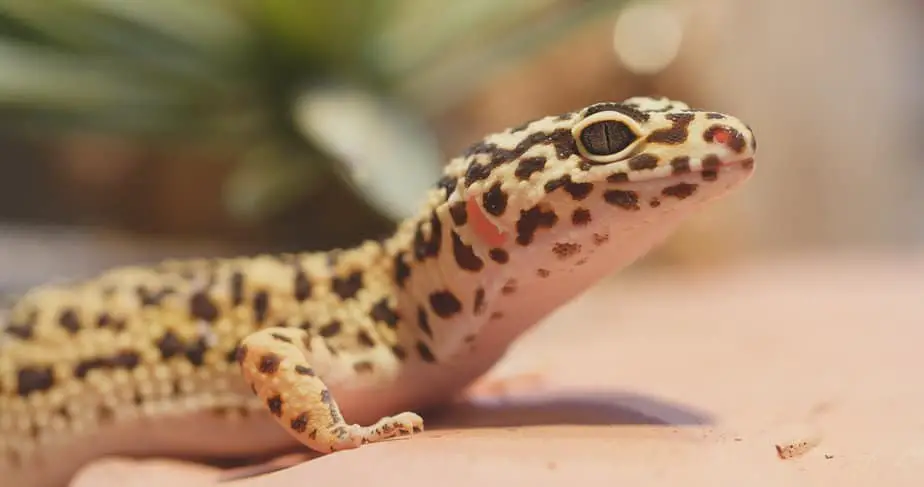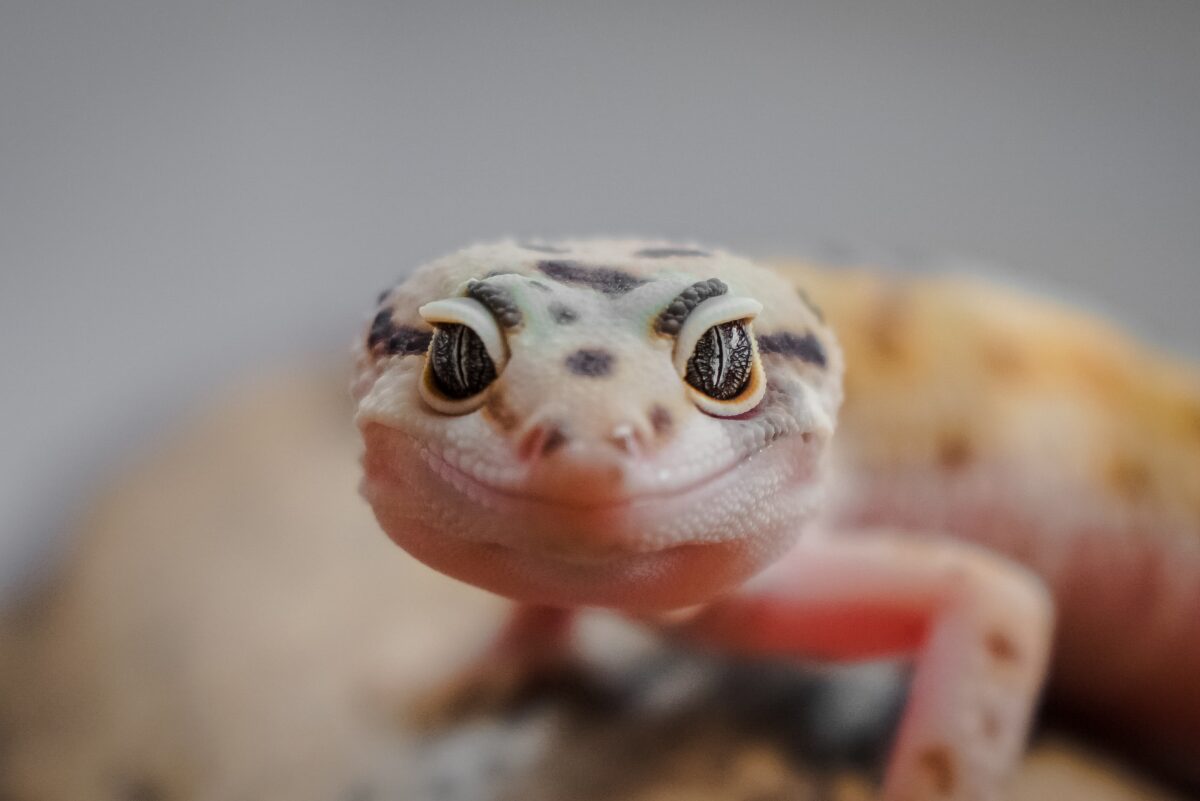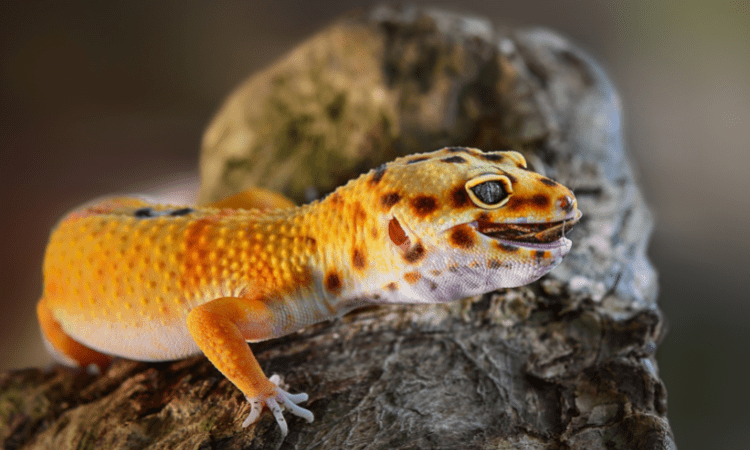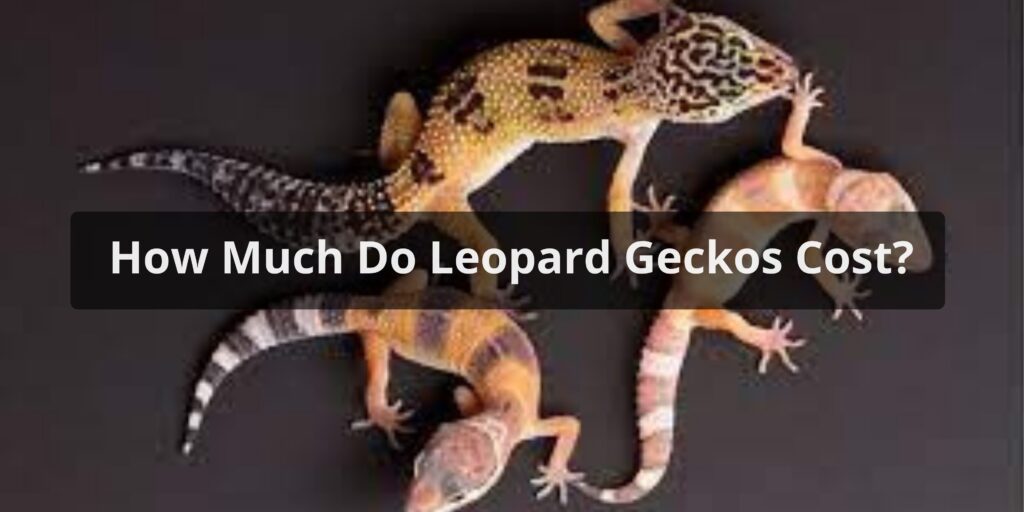Leopard geckos have become a popular pet reptile in recent years. With their docile nature, relatively small size, and easy care requirements, they make great beginner pets. However, before deciding to get a leopard gecko, it is important to understand the costs associated with properly caring for one. Here is a look at how much do leopard geckos cost.
Initial Costs

When you first get a leopard gecko, there are some essential items you will need to purchase. These include:
Enclosure
An appropriate enclosure is one of the most important investments for a leopard gecko. A basic 10-20 gallon tank is sufficient for a juvenile gecko. However, adults require a minimum tank size of 20 gallons. Screen enclosures are not recommended as leopard geckos require a certain humidity level. Expect to spend $50-150 on an adequate glass terrarium.
Substrate
Proper substrate is vital to maintain humidity levels and allow for natural burrowing behaviors. Recommended substrates like reptile carpet, paper towels, or tile can cost $10-30. Calcium sand should be avoided as it can cause impaction when ingested.
Heat lighting
Leopard geckos are ectothermic and rely on environmental temperature to regulate their body heat. An under tank heating pad ($15-40) provides a hot spot for digestion and thermoregulation. Additionally, overhead heat and UVB lighting ($50-150) mimics natural conditions. A combo dome lamp fixture ($10-20) may also be required.
Hides decor
Every enclosure needs a cool hide, warm hide, and humid hide to allow the gecko to thermoregulate ($20-60 total). Other decor like branches, fake plants, etc. can enrich the habitat ($10-30).
Calcium vitamins
Supplements like calcium and vitamin D3 are essential to prevent metabolic bone disease ($10-15). A bottle will need to be replenished every 1-2 months.
Food water dishes
Shallow water bowls, food bowls, and feeding tweezers will be needed ($10-20). Crickets or worms should be fed regularly as the staple diet ($5-10 per week).
In total, the initial setup can range from $200-400+ depending on tank size and accessories chosen. This cost is spread out as items are purchased over time while setting up the habitat.
Recurring Costs

Caring for a leopard gecko also involves some regular recurring costs. These include:
Food
Crickets, mealworms, dubia roaches, or other feeder insects will need to be purchased on a weekly or biweekly basis. Expect to spend $5-15 per week on feeders.
Substrate
Substrate may need to be replaced every 1-2 months as it gets soiled. This can cost $10-30.
Supplements
Calcium and vitamin supplements need replacement every 6-8 weeks. Plan to spend $5-10 to restock as needed.
Utility costs
The heat lamp and heating pad used will increase electric costs slightly, though leopard geckos have relatively low energy demands. The increase may be $5-15 per month.
Veterinary care
Annual exams and vaccinations are recommended to keep your gecko healthy. Basic visits can run $75-150 per year. Emergencies or illness may require additional veterinary expenses.
Cleaning supplies
Disinfectants, paper towels, poop scoopers, and other cleaning accessories ($5-15 per month).
Habitat maintenance
As your gecko grows, a larger enclosure may be needed. Replacing worn or broken tank decor may also be necessary occasionally.
Altogether, the recurring costs of food, utilities, and care items can total $40-100 per month for one leopard gecko. Annual vet visits will be an additional cost.
Other Potential Costs

Here are a few other expenses that may pop up:
- Leopard gecko purchase price – captive bred babies from a reputable breeder generally cost $30-75. Rare morphs can cost over $100+. Adopted adults are sometimes rehomed for a $20-50 adoption fee.
- Habitat upgrades – adding supplemental heating, automated timers,복사 luxury cages, bioactive substrate, etc. can enhance the habitat but increase costs. These upgrades can range from $50-500.
- Boarding – if you travel and cannot take your gecko, boarding at a specialty reptile boarding facility averages $10-20 per day.
- Accessories – extra decor, thermometers/hygrometers, feeding tongs, and other non-essential supplies ($5-20 per item).
How to Save Money on Leopard Gecko Care
Here are some tips to make owning a leopard gecko more affordable:
- Buy the largest suitable enclosure possible to avoid upgrading sizes frequently.
- Use paper towels, reptile carpet, or slate tile instead of specialty substrates.
- Equip the tank with low wattage heat and light bulbs to reduce electricity usage.
- Buy feeder insects in bulk online to save compared to pet store prices.
- Offer more worms which are nutritious and cheaper than crickets.
- dust food with supplements only 1-2 times weekly instead of every feeding.
- Skip the annual vet visit for healthy adult geckos, only go if ill or injured.
- Make your own simple tank decor like hides from plastic containers.
- Clean the tank meticulously to extend the life of substrates.
- Only purchase necessary tank accessories, avoid unnecessary add-ons.
With some budget-friendly choices, you can keep costs lower and provide great care. Average monthly expenses can be kept to $50 or less this way.
Conclusion
In summary, leopard geckos make fantastic pets, but do require an initial investment and ongoing care costs. The initial habitat setup can range from $200-400. Average monthly care expenses are approximately $40-100 depending on feeder and utility costs. Annual vet visits cost $75-150 extra. With smart shopping and care choices, costs can be lowered without sacrificing quality care. Make sure to factor in these costs before bringing home your leopard gecko!
FAQs About How Much do Leopard Gecko Cost
Where can I find affordable leopard geckos for sale?
Affordable leopard geckos can often be found at reptile expos, local breeders, and online classified ads. Be sure to research and compare prices, but also consider the gecko’s health and the seller’s reputation. Quality and genetics can impact long-term costs.
Do reputable breeders offer payment plans or financing options?
Yes, some reputable breeders offer payment plans or financing options to help enthusiasts acquire high-quality leopard geckos. These plans vary by breeder, so it’s essential to inquire about terms, interest rates, and any associated fees before making a commitment.
Are there adoption or rescue options for acquiring leopard geckos?
Yes, there are adoption and rescue options for acquiring leopard geckos. Reptile rescue organizations and shelters may have geckos available for adoption. These options can be a compassionate way to provide a home for geckos in need while often being more cost-effective than purchasing from a breeder.
What are the price differences between baby and adult leopard geckos?
Baby leopard geckos are typically more affordable than adults. Prices can vary widely based on factors like morph, genetics, and breeder reputation. While baby geckos may cost less upfront, consider long-term expenses like growth, care, and housing when making your decision.
Are there any additional costs for specific gecko morphs or colors?
Yes, specific gecko morphs or colors can command higher prices due to their rarity and demand. Rare morphs with unique patterns or colors may cost significantly more than common ones. Keep in mind that these morphs often come with higher care requirements and costs, so research thoroughly before purchasing.



